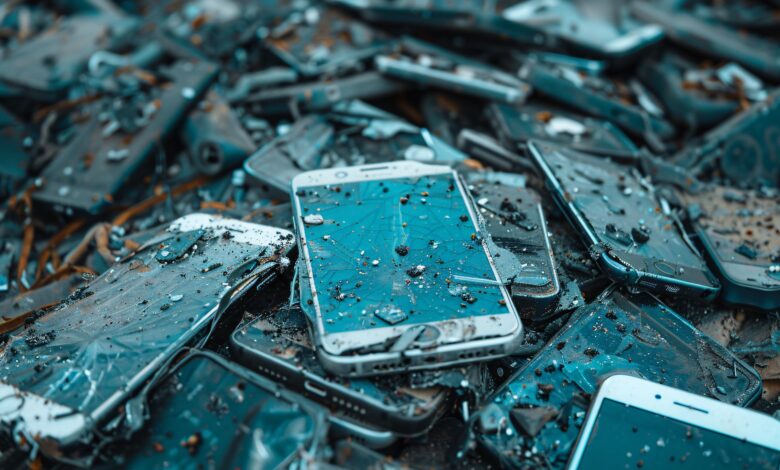I Thought My Water-Damaged Phone Was Trash Until Someone Offered Me Cash for It

The phone hit the water in slow motion. I watched it happen like a movie I couldn’t pause. One second on the edge of the bathroom sink. Next second, doing a perfect dive into the toilet bowl. Full submersion.
Grabbed it immediately. Shook it off. Dried it frantically. Pressed the power button with desperate hope. Nothing. The screen stayed black.
My iPhone was dead. And it was absolutely my fault.
The Panic Stage
Did all the things you’re supposed to do. Rice bag. Silica gel packets. Left it by a fan for three days. I tried charging it every few hours. Nothing worked. Thoroughly dead.
I took it to a repair shop. Guy opened it up, looked inside, and gave me a face. You know the face.
Water damage throughout. Corrosion on the logic board. I could try replacing components, but it’d cost more than the phone is worth.
Cost estimate: Rs.42000 to attempt repairs with no guarantee.
Value if it worked: maybe Rs.30000 used.
Math: terrible.
I thanked him and left. Tossed the phone on my desk. Sat there for two weeks like a very expensive paperweight.
The Conversation That Changed Everything
I complained about it to my coworker James during lunch. He’s one of those people who knows random useful information about everything.
So you just have it sitting on your desk?
Yeah. Can’t afford to fix it. Can’t afford to replace it yet either. It’s just there, being dead and judging me.
James pulled out his phone, started typing. You know you can sell broken phones, right?
I laughed. Who’s going to buy a phone that doesn’t turn on?
Companies that fix phones or use them for parts. Your screen might be fine. The cameras might work. Even if everything’s broken, the frame and components have value.
He showed me search results. Sell broken phones. Sell water damaged phones. Pages of results. Actual companies.
You’re telling me someone will pay me for a phone that’s basically a brick?
Yeah. Probably not a lot, but more than zero, which is what you’re getting now.
The Research Skepticism
Went home that night and started searching. Part of me still thought this was too good to be true.
Found multiple sites buying broken phones. Similar processes: answer questions about condition, get a quote, ship it in, receive payment. Simple. Maybe too simple.
Questions were detailed. Does it power on? No. Screen cracked? No. Water damage? Yes. How long submerged? Approximately three seconds of pure horror.
Went through the process on three different sites. Quotes came back:
Site one: Rs.4500 Site two: Rs.8000 Site three: Rs.6500
Eighty dollars. For a phone I thought was worthless. For something I was ready to throw away.
The Decision Process
I sat there for twenty minutes just thinking. Was this legitimate? Would I ship my phone and never hear from them again?
Read reviews. Checked Reddit threads. Looked for scam reports. Everything seemed legitimate. People were actually doing this.
The second site offered the best price and had solid reviews. Quote good for 30 days. Shipping free. They’d send a prepaid label.
Worst case: ship a dead phone and somehow get scammed out of a device I wasn’t using anyway. Best case: get Rs.8000 for something I thought was trash.
Clicked accept before I could talk myself out of it.
The Shipping Experience
The prepaid label arrived in my email within an hour. Printed it at work the next morning. Found a small box at home. Wrapped the phone in bubble wrap.
The whole time thinking: this is weird. Shipping a broken phone to strangers and hoping they send money. This is either brilliantly efficient or I’m about to learn an expensive lesson.
Took it to the post office on lunch break. The clerk weighed it, scanned it, and gave me a receipt. The phone was gone.
Tracking said three business days. I checked approximately forty times per day. My wife caught me checking at dinner.
It’s a broken phone, she said. Even if nothing happens, you lost nothing.
She was right, but I’d gotten invested. I wanted my toilet-drowned phone to have value.
The Inspection Wait
Packages arrived at their facility Thursday. Automated email: Your device has been received and is being inspected. You’ll hear from us within 48 hours.
Those 48 hours felt very long. Keep imagining scenarios. They’d decide it was worthless. They’d claim I’d sent them a different phone.
Friday afternoon: nothing. Friday evening: nothing. Went to bed convinced this had been a scam.
Saturday morning, 9:47 AM, email. Subject: Your device has been approved for payment.
I opened it so fast I nearly dropped my current phone. That would’ve been ironic and expensive.
The email was detailed. They’d inspected the phone. Confirmed the model. Note the water damage. Assessed which components were salvageable. Screen: perfect. Cameras: likely functional. Frame: good. Logic board: damaged but had recoverable components.
Quote confirmed: Rs.8000. Payment within three business days.
Actually yelled Yes! out loud. My wife came running in.
The broken phone! They’re paying me eighty dollars for it!
She looked at me like I’d lost my mind. You’re way too excited about eighty dollars.
It’s eighty dollars for a phone I thought was worthless! This is free money!
The Payment Arrival
Payment arrived Tuesday. Direct deposit. Rs.8000.00 exactly. No fees. No surprises. Just money for a dead phone.
Sat there looking at my bank statement. This was real. I’d just sold a water-damaged phone I’d written off as a total loss.
Texted James: You were right. Got Rs.8000 for the dead phone.
He responded immediately: Told you. I sold a phone with a cracked screen last year. Got Rs.12000 for it.
Why doesn’t everyone know about this?
Most people assume broken means worthless. They don’t even check.
The Bigger Picture
Started thinking about all the broken electronics I’d thrown away over the years. An old tablet with a cracked screen. A laptop that wouldn’t boot. An iPod that died in 2014. How much money had I just tossed in the trash?
Mentioned the phone sale to a few friends. Every single one said some version of wait, you can sell broken phones?
One friend had a phone with a shattered screen in their junk drawer. I walked them through it. They got Rs.9500. Another friend had a phone that wouldn’t charge. Rs.7000.
Everyone had the same reaction: shock that broken devices had value. We’ve been conditioned to think not working means worthless. But these phones are full of components. The screen on my dead phone was perfect. Those cameras probably worked fine. Even the frame had value.
Companies that repair phones need parts. They buy broken devices, harvest working components, and use them to fix other phones. A whole ecosystem I never knew existed.
What I Learned
Broken doesn’t mean worthless. It just means broken. Components still have value.
Water damage isn’t always total damage. My screen survived. Other parts survived. Enough survived to make the phone worth buying.
Always check before throwing away electronics. Five minutes of research could be worth hundreds of dollars.
The repair and refurbishment industry needs constant supply of parts. Your broken device is their inventory.
Even if you can’t use something, someone else might be able to.
The Environmental Side
There’s also something satisfying knowing my phone didn’t end up in a landfill. It got separated. Working components went into other phones. Materials got recycled properly. The phone died, but its parts lived on.
I started thinking about electronics differently. They’re not single-use devices. They’re collections of valuable components that can be harvested, reused, recycled. Even when they die, they have value.
Better for the environment. Better for people who repair their own phones. Better for my wallet.
The New Habit
Now when something electronic breaks, my first thought isn’t trash. How much can I get for this?
My old laptop died last month. Wouldn’t boot. Blue screen of death. Old me would’ve taken it to electronics recycling.
New me checked resale value first. Even broken, with dead motherboard and cracked case, got Rs.8500 for parts.
My wife’s tablet screen cracked when she dropped it. Repairs would cost Rs.20000. Tablet only worth Rs.30000 working. We sold it for Rs.12000 and put that toward a new one.
This isn’t about getting rich. Eighty dollars here, hundred there. But it adds up. Money for things I would’ve thrown away.
The Advice
If you have a broken phone sitting somewhere, check if it’s worth anything. Answer honestly about the condition. Don’t lie about water damage or cracks. See what it’s actually worth before assuming it’s worthless.
The process is easy. Most companies send prepaid labels. You box it up and send it. They inspect it. They pay you. Done.
Worst case: they offer less than expected and you decline. You’re exactly where you started. Best case: you get paid for something you thought was trash.
My toilet-drowned phone got me Rs.8000. That’s dinner out. It’s a tank of gas. It’s a small dent in my next phone purchase. Definitely better than zero.
The Conclusion
I think about that moment sometimes. Watching my phone fall into the toilet. The horror. The immediate certainty was that I’d just destroyed something expensive.
I was right about destroying it. But wrong about it being worthless. Broken things can still have value. You just have to know where to look.
James was right. The Internet’s full of companies that buy broken devices. They’re not doing it out of charity. They’re doing it because those devices have value. Components to harvest. Materials to recycle. Parts to resell.
Your broken phone probably has value too. Maybe not a lot. But more than zero. More than it’s worth sitting in a drawer or buried in a landfill.
Check before you toss. Research before you assume.
Mine was worth Rs.8000. And a good story about the time I dropped my phone in the toilet and somehow came out ahead.
Well, eighty dollars ahead minus the cost of buying a new phone. But still. Small victories count.



